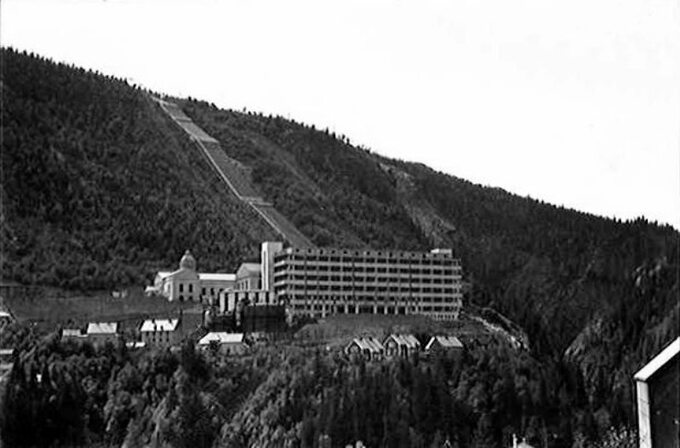The Battle of Heavy Water was a series of events that took place throughout most of World War II.
Germany has been trying to create nuclear weapons since 1939. And for that they needed hard water. They failed to conquer France, but succeeded in Norway, which they occupied in 1940.
Hard water and the Curie family
Even before the German attack on France, the French authorities asked Norway to transport heavy water. The general director of the chemical plant producing this substance (Norski Hydro) agreed, although he understood that if his country fell into the hands of the Germans, he would face death.
French intelligence monitored the export of heavy water to France. The cargo arrived in France via Oslo and Perth in Scotland. After the entire stock was transferred there to Frédéric Joliot-Curie (son-in-law of Maria Skłodowska-Curie), who hid it in the vault of the Bank of France.
When the Germans invaded France, hard water was no longer safe in Paris. Joliot-Curie took him to Bordeaux, where he managed to get on the steamer Broompark, on which – along with other scientists – he was transported to Great Britain (three weeks after the evacuation of Dunkirk, about 200,000 civilians were evacuated in this way).
Little did they know that in addition to the civilian population, the steamer Curie was traveling on was also carrying heavy water and many valuable industrial machines. The ship arrived in England on June 21, 1940.
Germany occupies Norway
In April 1940, the Germans occupied Norway and thus gained access to a heavy water producer, the Norsk hydro plant, located at the Vemork hydroelectric station.
In order to prevent Germany from obtaining the material needed to build nuclear weapons, the Allies decided to destroy the plant. “Battle for heavy water” entered the decisive phase, however, it took a long time to prepare for the mission.

It was only in 1942 that the Allied Command created a special unit to develop a plan to destroy Norsk Hydro. During this time, the entire complex was bombed several times, but the bombs did not cause significant damage to the solid buildings.
Finally, it was decided to send a small part to Norway. Soldiers were to be parachuted into the vicinity of the Norsk Hydro plant and later attempted to destroy the entire production facility. Later the group was to arrive in Sweden.
Rose, Gunnerside and Swallow
The mission, called Operation Grouse, began on October 19, 1942. Four Norwegian agents were shot down near the town of Rjukan, where the factory was located. After several days of fighting in the mountains, they reached Norsk Hydro, where they conducted reconnaissance and sent it to the Allied Command. The first stage of the mission was successfully completed.
On November 19, a group of 30 British border guards set out from Scotland, but they did not reach Rzhukan at all. Due to very bad weather, the plane they were flying crashed into a mountain. Several people died on the spot, most of the survivors fell into the hands of the Gestapo and were killed.
Another attempt to blow up the heavy water plant took place in early 1943. The mission, codenamed “Gunnerside,” was to be carried out by six Norwegian commandos who were shot down near the target in February. The soldiers were reunited with four commandos who had survived Operation Gruz, now codenamed “Swallow”. Both groups went to Norsk Hydro.
On February 27, 1943, the Norwegians entered the factory, where they managed to destroy 1.5 tons of heavy water and equipment for its production. After the action, six commandos moved to Sweden as planned. The rest remained in place as the command awaited further information on the actions of the Germans.
Meanwhile, the Germans quickly began to rebuild the plant and resumed production of hard water in April of the same year. In order to save the situation, one of the commandos, Knut Haukelide, established cooperation with the factory employees who sabotaged the production of the substance, for example, by contaminating it or destroying high-purity water. However, production at the factory did not stop completely.
In January 1944, the Germans decided to transfer the factory to the Reich. Both machines, production lines and the heavy water itself were loaded onto ships. On February 20, 1944, Haukelide and members of the resistance movement in collaboration with him sank a ferry carrying heavy water on Lake Tinsia. The Germans evacuated from Norway and they never managed to get the heavy water back.
Also read:
Pearl Harbor. Was this attack predictable?Also read:
Stanislav Macek. The legend of FalesAlso read:
Jerzy Ivanov-Szhanovich. A famous agent and his amazing actions
